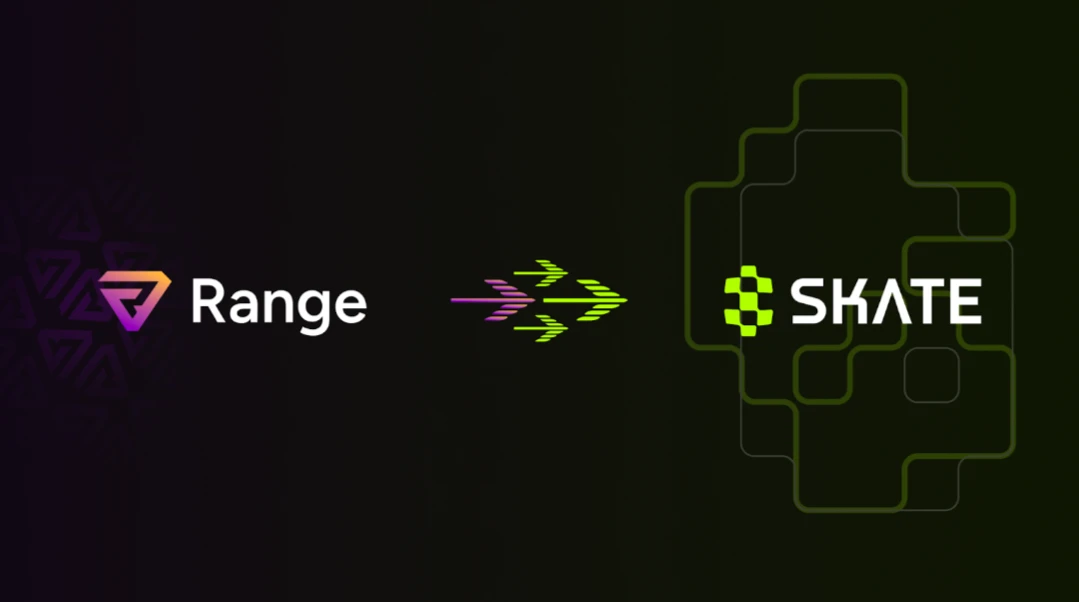
We are excited to announce the launch of Universal Application Layer (Skate), allowing any DApp to run simultaneously on thousands of chains through a single state set. Any non-EVM and EVM new chains can easily connect to Skate, and users and developers only need to interact with Skate to immediately access thousands of chains.
With the emergence of Rollups scaling solutions and the rise of modularity, a large number of emerging L1 and L2 have increased on-chain throughput and reduced transaction costs. However, the multi-chain environment has brought a series of problems, including poor user experience, repetitive development work, fragmented liquidity, and harmful order flow.
The above problems are caused by the isolation of DApp applications. In a multi-chain environment, DApps need to be deployed, adjusted, and maintained on an increasing number of chains. Each deployment on a new chain represents a new isolated application state set, exacerbating the isolation of DApp applications.
Skate provides a convenient means for DApps to be deployed on any chain, while connecting all existing liquidity through a hub-and-spoke architecture. It relies on users signing Intents to match and execute transactions, and relies on EigenLayer for real-time execution to achieve fast finality.
Why do we need to build Skate?
The isolation of DApp applications is the result of applications having different "state sets" on different chains, and is the fundamental reason for the liquidity challenges in the current multi-chain environment. The state set refers to the current state of the system at a specific point in time, such as how many assets each user owns.
Take DeFi as an example: there are currently over 1200 decentralized exchanges, 380 lending protocols, and 220 derivative protocols deployed on as many as 30 chains. This means that countless state sets must interact with each other, introducing significant complexity and inconsistency. Other areas on the chain also face similar challenges, which are the main obstacles to the industry's path to large-scale application, and can be summarized as follows:
High development costs: Deploying and maintaining separate application state sets on new chains requires a large amount of development resources and liquidity startup costs.
Poor user experience: In today's multi-chain environment, the learning cost for users is increasing. Users need to constantly cross-chain assets, learn to interact with various DApps on each chain, and find the best projects for yield. This is the main obstacle for new users to enter the chain.
Fragmented liquidity: Liquidity is dispersed across the state sets of various DApps on different chains, resulting in price differences and high slippage. As the number of chains increases, liquidity will only get worse.
Toxic Flow: The current pattern of DApp application isolation has led to harmful order flows such as arbitrage trading and MEV. The sole purpose of arbitrageurs and MEV is to extract value from LPs, rather than creating value for the chain.
The isolation of DApp applications results in different state sets for DApps deployed on each chain. This means that deploying on a new chain is a huge undertaking for DApps, and existing solutions to solve this problem at the single-chain level are far from sufficient: the fact that DApps have different state sets on different chains is the fundamental reason for application isolation.
True interoperability requires close cooperation between multiple chains and multiple DApps, and without solving this problem, it will be difficult for every area on the chain to expand.
Introduction of the concept of Universal Application Layer by Skate
Skate introduces the concept of Universal Application Layer, which means that Skate maintains a single state set and a collection of application logic that is accessible to all chains.
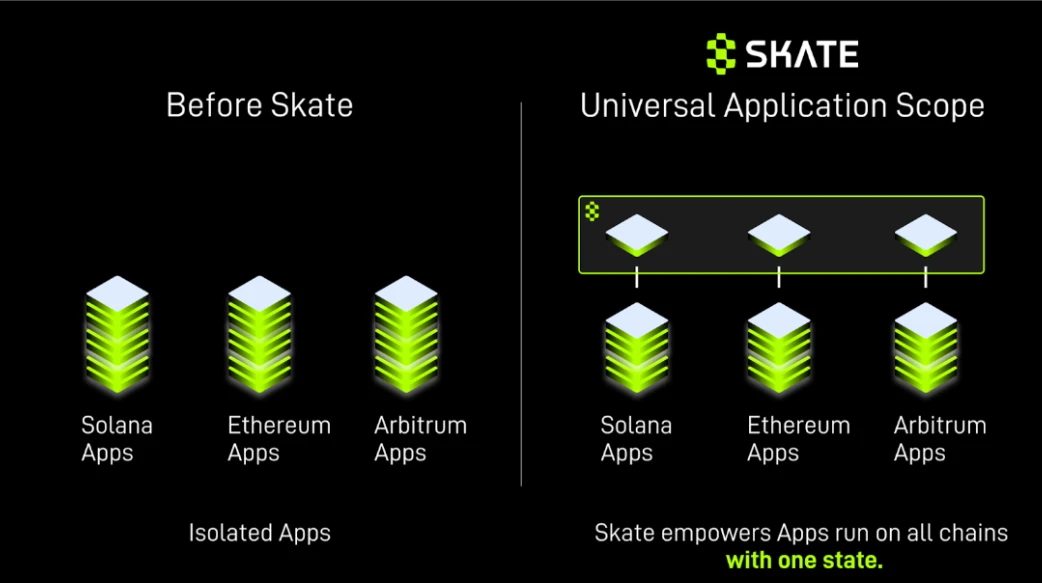
We create Skate based on OP Stack and connect it to other networks through a hub-and-spoke architecture, allowing users to sign Intents to match and execute transactions, and relying on EigenLayer for real-time execution to achieve fast finality.
This means that Skate can simultaneously monitor orders, liquidity, and the internal mechanisms (application logic) of applications across all blockchain networks. Skate itself will only record the application logic, without storing any assets. The state set and application logic of applications using Skate will reside on the Skate chain, allowing third-party executors to monitor signed Intents and assist in execution. This makes it easier for any DApp to be deployed on a new chain.
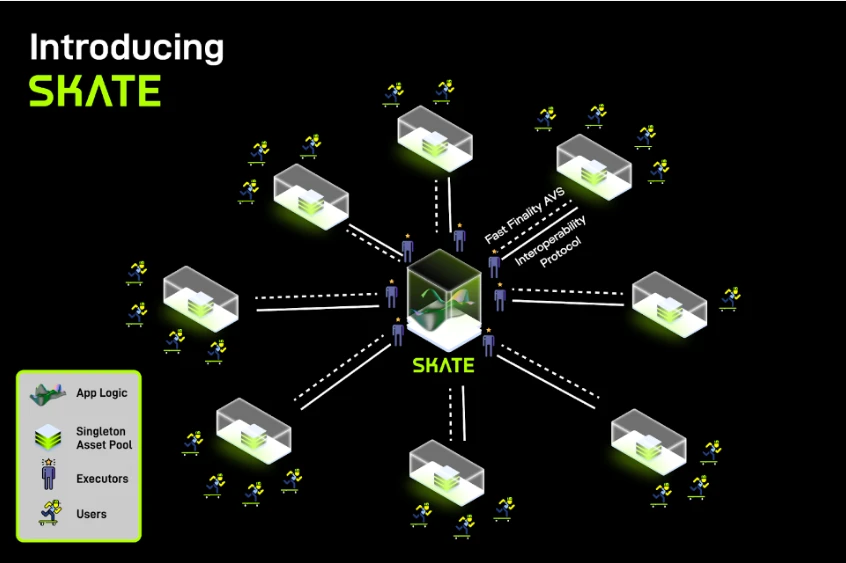
What does the launch of Skate mean
This means that applications become universal across all chains, and developers can easily deploy any DApp on any chain. Both developers and users do not need to expose themselves to bridging risks or fragmented liquidity; instead, they only need to sign Intents to match.
This has a significant impact on almost all areas of Web3, with application use cases covering DeFi, NFTs, games, SocialFi, and more.
For example, a DeFi application deployed on the Ethereum mainnet can be extended to Solana, Arbitrum, and thousands of other chains using Skate's innovative technology. Skate allows users to interact with DApps based on Intents while maintaining a single state set across all chains. This means that user operations on Solana will be reflected on other chains, and vice versa, providing a seamless and unified experience.
This is just the tip of the iceberg, with Skate, numerous possibilities are revealed, and innovative cross-application and cross-chain products will emerge.
Overview of Skate
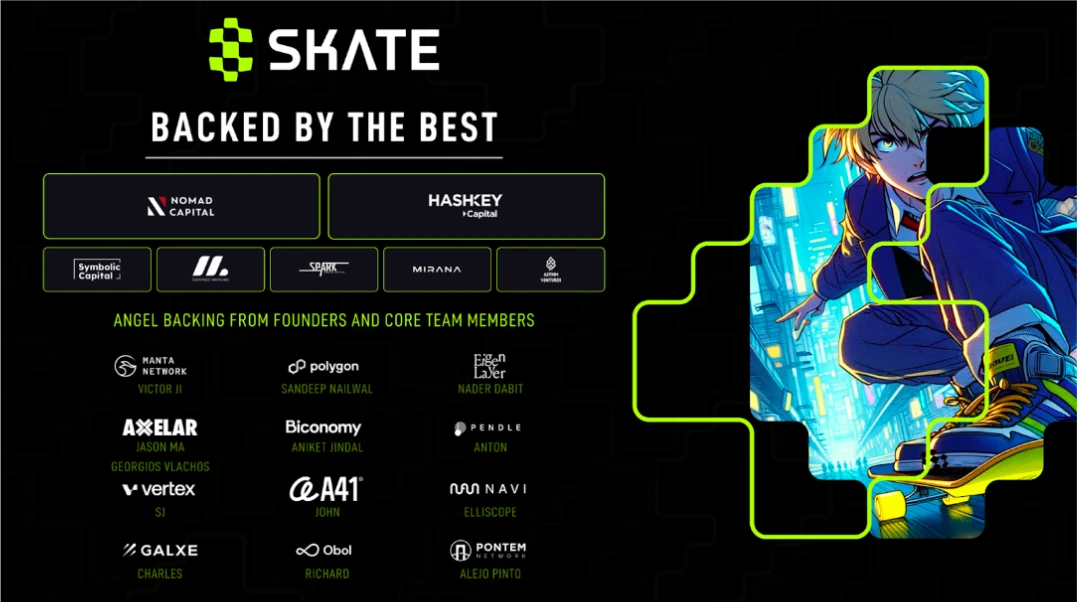
The Skate team consists of financial engineers and blockchain developers with extensive experience in digital asset trading. During the Range Protocol period, we integrated 10 blockchain networks with a TVL of over $30 million and established partnerships with leading DeFi networks and applications. Skate previously completed a seed round of financing led by Hashkey Capital and Nomad Capital, with participation from Spark Digital Capital, Mirana Ventures, Mantle Ecofund, Symbolic Capital, Asymm Ventures, and Comma3 Ventures.
Recently, Skate has received support from Web3 entrepreneurial teams such as EigenLayer, Polygon, Manta, Axelar, Biconomy, Pendle, A 41, Vertex, Navi, Pontem, and Galxe.
In the near future, we will focus on integrating with leading partners and applications. We will also share more specific architectural information at the technical level.
Welcome to Skatepark
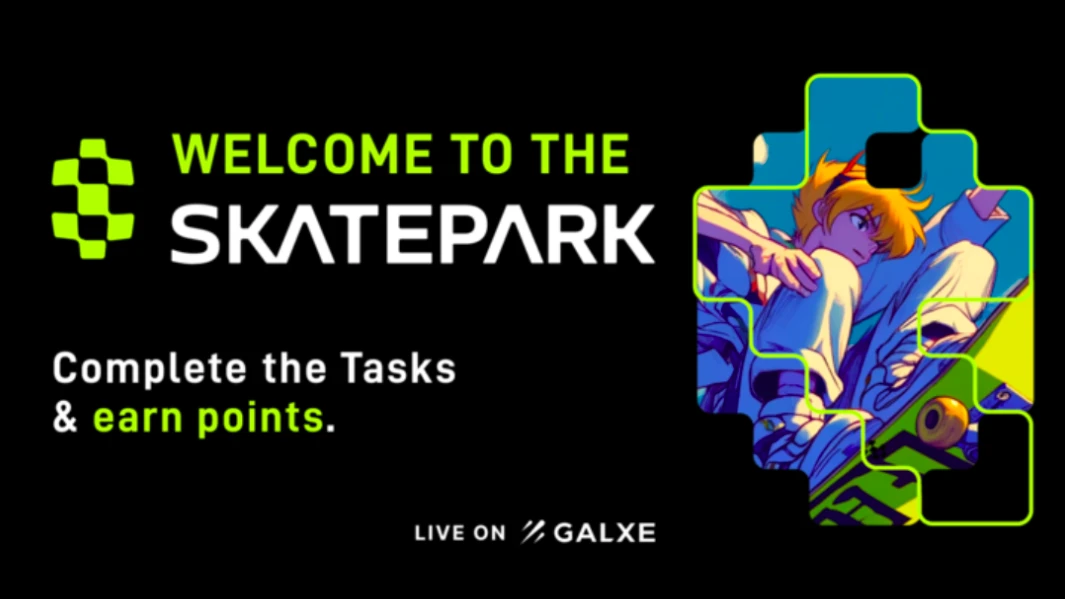
To celebrate the launch of Skate, we will open SkatePark to early community supporters. SkatePark is a dynamic platform that will reward participants for their early contributions and involvement in the Skate ecosystem.
We encourage users to complete tasks on Galxe and earn points early at SkatePark, with points directly linked to our future community token airdrop.
Also, please make sure to follow us on Twitter: https://twitter.com/skate_chain and join our Telegram group: https://t.me/skatechain
免责声明:本文章仅代表作者个人观点,不代表本平台的立场和观点。本文章仅供信息分享,不构成对任何人的任何投资建议。用户与作者之间的任何争议,与本平台无关。如网页中刊载的文章或图片涉及侵权,请提供相关的权利证明和身份证明发送邮件到support@aicoin.com,本平台相关工作人员将会进行核查。




